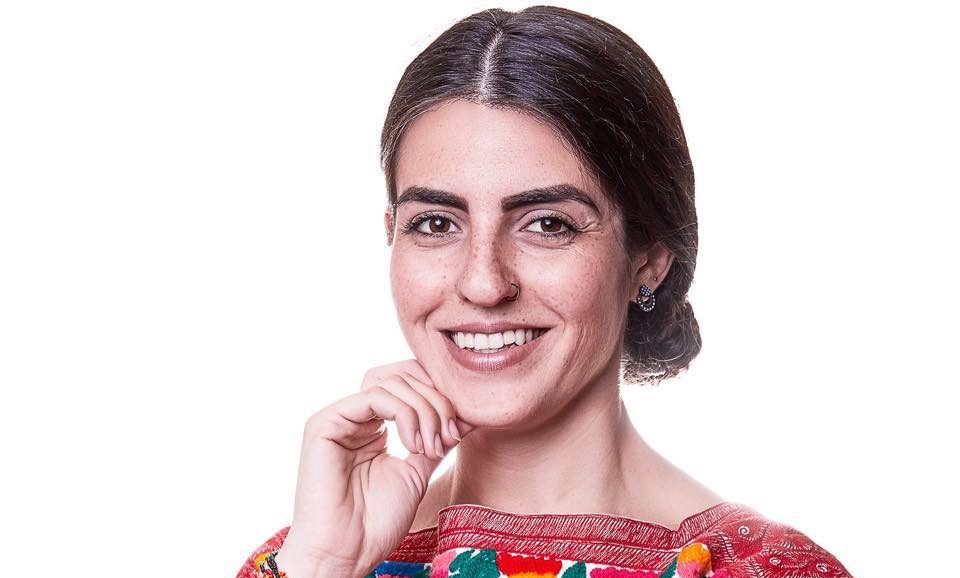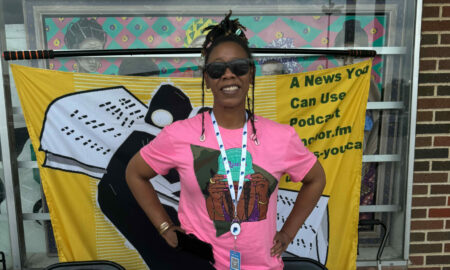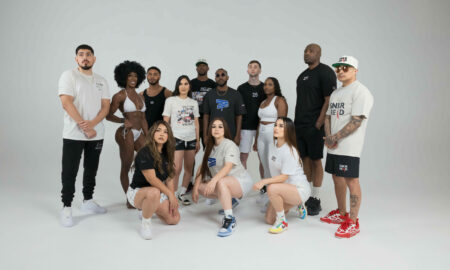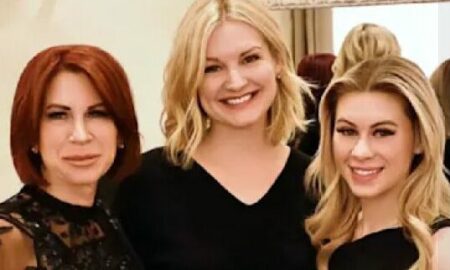
Today we’d like to introduce you to Maria José Currie.
Maria José, can you briefly walk us through your story – how you started and how you got to where you are today.
The idea and the urgency for this really started ten years ago. I was walking through a tiny market set up inside a church courtyard in central Mexico and watched as people haggled with artisans over a blouse. It was an elderly man who was working his booth dressed in his traditional linen shirt and white pants. A young girl, likely his granddaughter was translating his Otomi dialect into Spanish. They talked them down to less than forty dollars and then still didn’t buy it. After they left I asked the artisan how long it took to embroider and he told me it took about three months.
I nearly burst into tears and left with a burden that led me to search out artisans, explore mountain towns, and eventually start Del Alma Imports. three years before I started as a business, I went to my hometown of Tulancingo in the state of Hidalgo to meet with an artisan named Rosa. Rosa is from the mountain town of Tenango which is known as the birthplace of embroidery. She is Otomi and speaks her native language with her kids as she teaches them the art of embroidery that her mother taught her. It was sometime in our conversation about her work that she inspired the name, Del Alma. She told me that they as artisans carry their designs in their souls. Truly, artisans wear their identity on their shoulders.
They embroider centuries of traditions and symbolism into these garments. They embroider their prayers, hopes, dreams, and their very soul into their designs. Del Alma means “from the soul”. The more I learned from Rosa and other artisans and the more my eyes were opened to the amount of plagiarism constantly harming ethnic groups around Mexico, the burden I felt leaving that market 10 years ago turned into a burning fire. I could not sit back and watch these treasured designs disappear. People, tourists, consumers don’t realize the impact their purchases have. When you buy a plagiarized design, you are saying yes to a machine-made product and valuing it over a handmade product that has been a part of a people group for hundreds of years. Machines do not sweat, dream, or feel. The younger generations within ethnic groups that would traditionally learn the embroidery art from their parents are aware of the fact that less and less people are valuing their work so they aren’t learning how to embroider.
They aren’t embroidering with their elders and therefore not learning the language of their parents and grandparents. If you know the value of language then you understand just how much history and culture are passed down through language. Well, the native languages are dying and with the death of the last embroidery artist, there will be such a great loss that we can’t get back. My mission is to educate through bring these embroidered beauties directly from the artisans and creating opportunities to share their stories.
Great, so let’s dig a little deeper into the story – has it been an easy path overall and if not, what were the challenges you’ve had to overcome?
It has not been easy getting started. I have five kids seven years old and under. That is a challenge of its own! I started this business with the money it took to register with the state of Texas and just slowly started to build a tiny inventory.
Import costs have been something to get used to and the uncertainty within the current political climate makes it difficult to plan long-term. However, it has reaffirmed the necessity to share this bit of Mexican culture across borders.
The hardest obstacle is competing with machine-made goods. There are so many brands that blatantly plagiarize Mexican designs and they can be found in boutiques everywhere. It’s hard. They are creating an expectation that products that look like this and have this amount of embroidery will cost “x” amount. So people then see one of the authentic blouses that have all this hand-embroidered beauty on them with little imperfections because they are made by human hands and they don’t value them. Educating people on the impact of plagiarism is huge.
We’d love to hear more about the business.
Others work with artisan-made goods, and people know these brands, but I set myself apart by working directly with the artisans, staying in communication with them, and helping them be known by getting them to a new market. I do my best to sell these items affordably so that I can ensure work for the artisans. If they have a brand that they want to sell under then I import their products with THEIR name on them. I’m not creating a brand. This is their work.
Along with that, I don’t have a store front that people can come to and try garments on. I sell at pop-up shops, markets, and via special order through Instagram or email. Typically I post a new product that I got in and I’ll get emails or direct messages of people who want to claim it before it’s gone. I also post items that I can get made to order and will get requests for those often. The beauty of working directly with the artisans is that I can have things customized and made to a customer’s size.
The best part of this has been getting to know the artisans and hearing their stories. Rosa is just one example, but she is near to my heart. After a couple of years, we realized that she was a childhood friend of my mom’s cousins. She even showed me a picture of her as a little girl with them. Her brand Tonani is growing and it has been wonderful to see how her entire family is involved. Her daughter designed embroidered shoes that we carry under the Tonani brand. Her mother makes beautiful garments in Puebla and embroiders one of my favorite blouses. This family is a treasure.
Do you look back particularly fondly on any memories from childhood?
I have always loved art. I would draw on anything and everything. My parents would take us on adventures to small towns around Mexico just to explore and I think that’s where my passion for Mexican art came from. I have worn artisan-made bracelets on my right wrist since I was in 6th grade. I was a super competitive kid. If I didn’t agree with something I would absolutely fight it. My high school didn’t have a girl’s soccer team, so I played with the boys and I think that also taught me to hold my ground and be tough.
Contact Info:
- Phone: 210.854.7990
- Email: mariajose@delalmaimports.com
- Instagram: instagram.com/del.alma.imports
- Facebook: facebook.com/Del.Alma.Imports







Image Credit:
Luis Martinez
Suggest a story: VoyageDallas is built on recommendations from the community; it’s how we uncover hidden gems, so if you or someone you know deserves recognition please let us know here.

















